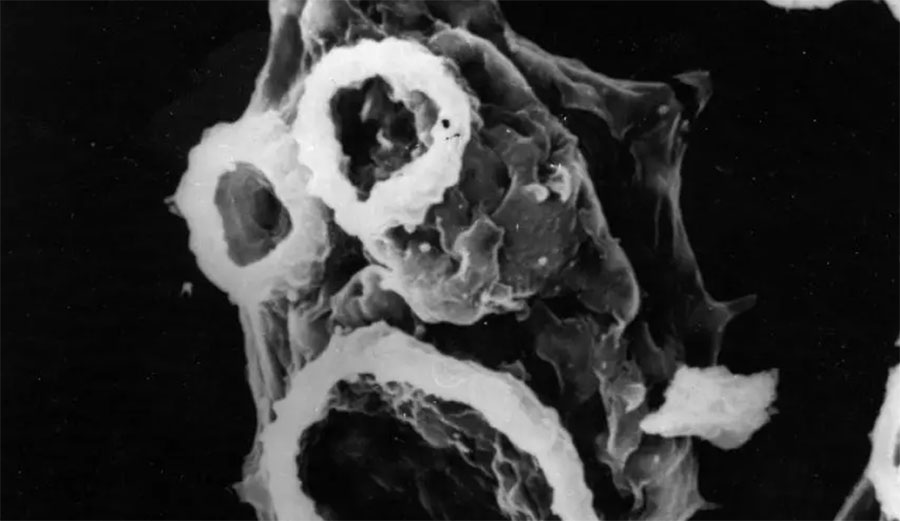
This is Naegleria fowleri, the so-called brain-eating amoeba. Image: Francine Marciano-Cabral/Newsweek.
Back in late September, news broke that a 29-year-old New Jersey man named Fabrizio Stabile had died from a very rare illness. It was caused by Naegleria fowleri, also known as a “brain-eating amoeba” and as it turned out, he’d been surfing in the Waco wave pool. The CDC came in, shut everything down, and tested the waters. Now, according to a report in ACS Chemical Neuroscience, researchers have developed something that kills Naegleria fowleri.
After the CDC’s test results came back saying that “epidemiologic and environmental assessment indicates that [Naegleria fowleri] exposure likely occurred at this facility,” Stuart Parsons of the BSR Cable Park released a statement that said “WATER TESTS COME BACK CLEAN,” which was a direct contraction the actual tests.
Although actually getting infected by brain-eating amoebae is extraordinarily rare, if you do, you’re basically done for. Naegleria fowleri is found naturally in warm, dirty water, and has to be sucked up through the nose. Drink that poisoned water all you want, and you’ll probably just get a case of the runs. Snort it, however, and you could wind up dead.
Since the brain-eating amoeba crosses into the brain, researchers studying a potential cure for the infection wondered whether drugs that cross the blood-brain barrier might do the trick. They settled on the anti-seizure medications diazepam, phenobarbitone, and phenytoin, then mixed up a batch with silver nanoparticles. “A major challenge in the treatment against the infections caused by these amoebae is the discovery of novel compounds that can effectively cross the blood-brain barrier to penetrate CNS (central nervous system),” researchers explained. “It is logical to test clinically-approved drugs against CNS diseases for their potential antiamoebic effects since they are known for effective blood-brain barrier penetration and effect eukaryotic cell targets.”
When they tested their results, they found something pretty amazing: all three drugs, when attached to those silver nanoparticles, killed Naegleria fowleri. “The drug-nanoparticle combos protected human cells from the microbes, increasing their survival rate compared with untreated infected human cells,” wrote the American Chemical Society in a press release announcing the findings. “The researchers propose that these repurposed drugs, aided by the nanoparticles, might kill amoebae by binding to protein receptors or ion channels on the single-celled organism’s membrane.”

